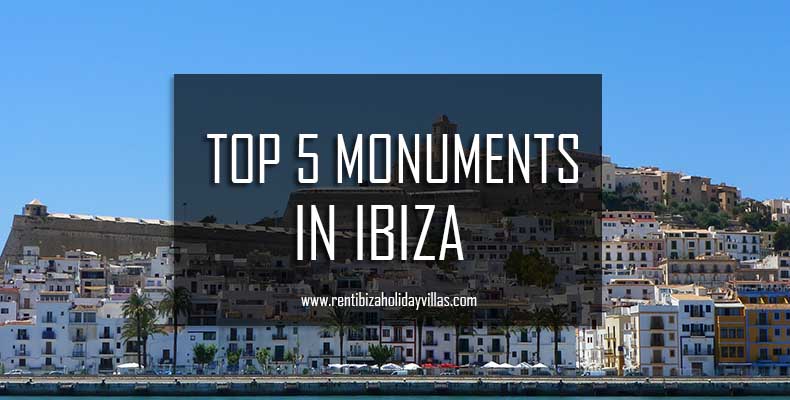Today, Ibiza is a popular tourist destination, well-known around the world for its nightlife and clubbing scene, its vibrant party atmosphere set amidst gorgeous Mediterranean beaches and azure waters.
What many people don’t know is that Ibiza has always been a busy port town with a great history, attracting a cosmopolitan crowd not only in modern times but throughout the centuries.
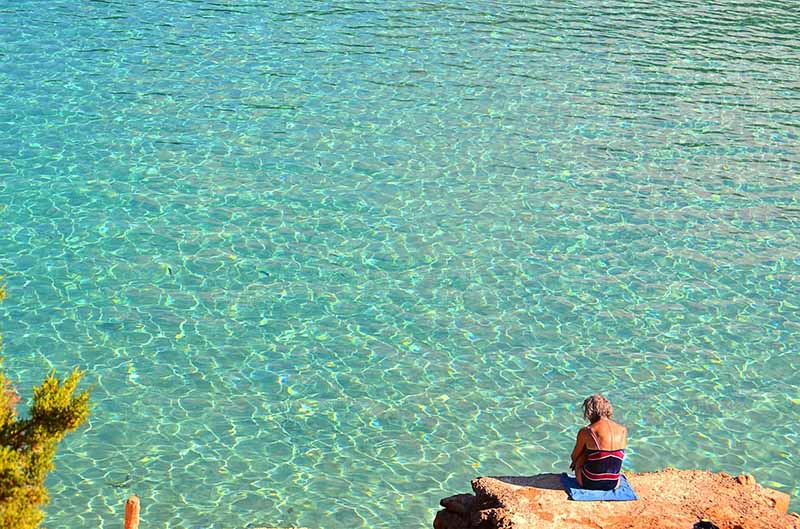
Ibiza’s strategic location between Mainland Spain and Africa means that it is an ideal trading post and it is also prone to invasions. Because of this, it has eclectic cultural influences, and the occupation of various ethnic groups including the Phoenicians, Carthaginians, Arabs, and Romans has contributed to its rich heritage. The Arabs had made a significant impact, as reflected in names of places and farming methods used on the island.
The influx of the alternative lifestyle community in the 1950s, 60s, and 70s have also made a mark on the island. It began with the arrival of refugee artists from Central Europe toward the end of the Second World War and culminated with the hippie revolution of the 1970s. The significant impact of this community is still evident today through its artistic community and craft markets located all over the island.
Visitors who are looking for activities in Ibiza will not be disappointed, and those who are interested in its history and culture can visit several sites and monuments that showcase this Balearic Island’s long and significant history. In fact, UNESCO proclaimed parts of Ibiza as a World Heritage Site in 1999.
Top 5 monuments in Ibiza: On your Ibiza sightseeing tour, include these top 5 monuments and landmarks to get a taste of the island’s remarkable past:
Content
Dalt Vila
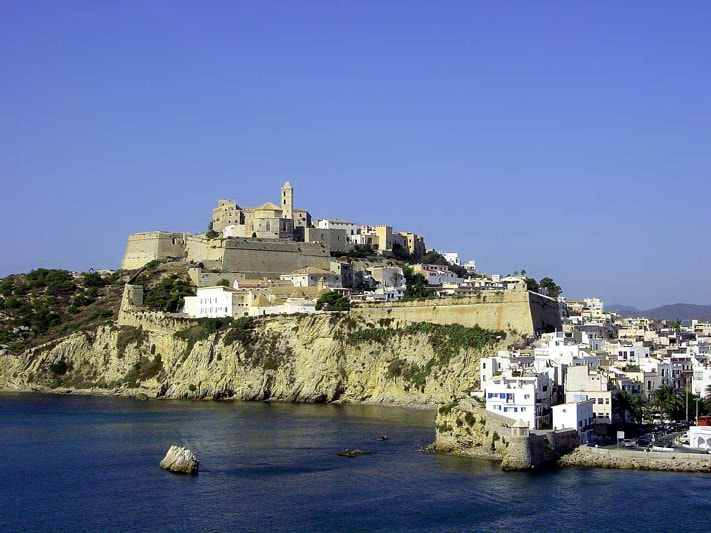
Source: Por Solea.
Found in Ibiza’s Old Town, Dalt Vila or Upper Town was declared a UNESCO World Heritage Site because of its ancient artefacts and old historic buildings. The ancient Phoenician settlement named their city “Ibosim” in 654 BC. This is the origin of present-day Ibiza. The city under the Carthaginian Empire needed protection from the invading Greeks and Romans, so they built this fortification known as Dalt Vila.
Be immersed in Ibiza history as you explore this outdoor archaeological museum, wonderfully preserved and providing wonderful views of Ibiza and the neighbouring island Formentera. Walk along its cobbled streets, go across the drawbridge, and gaze at the tall towers of the cathedral.
Within Dalt Vila, there are two main defensive structures still standing: the Baluarte de Sant Jaume and the Baluarte de Sant Pere. Visitors will also find monuments erected in honour of the town’s important historical figures: the bronze statue of the priest and historian Isidor Macabich and a reclining statue of Ibiza conqueror Guillem de Montgri.
Ibiza Cathedral
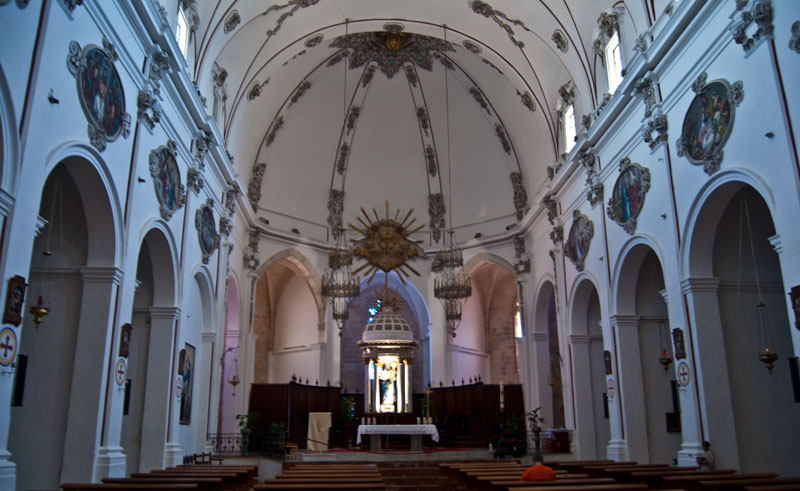
Source: solo ibiza.
Called Catedral de Eivissa in the local dialect, the Cathedral of Our Lady of the Snows or Ibiza Cathedral is a grand Gothic/Baroque structure, which was founded in the 14th century but not completed until the 17th century. Following the Catalan conquests in 1235, the Christian conquistadores ousted the Moors, and a parish was established to spread the Christian faith.
The cathedral which was named in honour of Nuestra Señora de las Nievas was built on the site of the Yebisah mosque. It has an imposing Gothic tower, but the interior of the church was redone in the Baroque style during the 18th century. The cathedral stands within the walls of Dalt Vila, perched on top of the Old Town. Offers spectacular views over the sea, especially at sunset. The cathedral houses many notable works of art, such as two 14th-century Gothic panels of Saint Anthony and Saint Tecla created by Francesc Cornes.
The cathedral’s most treasured artefact is a precious gilt silver and gold monstrance created by Francesc Marti, dating from 1399. It also has a beautiful Madonna statue, known as Nostra Senyora de las Neus. The Cathedral’s bell tower houses church bells that have been ringing since the 16th century. Admission is free, and mass is celebrated here every Sunday.
Monumento A Los Corsarios (Corsair Monument)
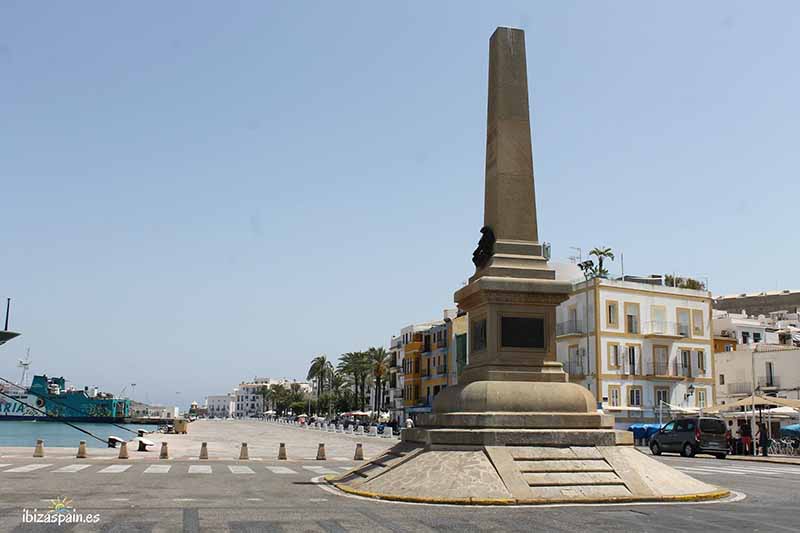
Source: Ibiza Spain.
The Corsair Monument is a special tribute from the people of Ibiza to the privateers licensed by the Spanish crown who defended their coastline from the threat of pirates during the 17th to 18th centuries. This stone obelisk is located within the harbour at Avenida de las Andanas.
It faces Placa d’Antoni Riquer, a small square named after an important Ibizan corsair. Antonio Riquer was captain of the schooner San Antonio and Santa Isabela, which was a vessel that prevailed against Felicity, an invading ship captained by the infamous pirate Miguel ‘El Papa’ Novelli.
Inaugurated in 1915, a Catalan architect named Augusto Font created this monument as a permanent reminder of the corsair’s invaluable contribution to the island. Interestingly, the first stone was actually laid out in 1906 during the 100th anniversary of Antonio Riquer’s victory.
By the way, you do not need to stay in the old town if you want to have all these monuments nearby on your holidays, because of the size of the island. So, you can stay in a villa in San Antonio, or in the north of Ibiza. It´s up to you, you´ll get there quick.
Archaeological Site of Puig des Molins
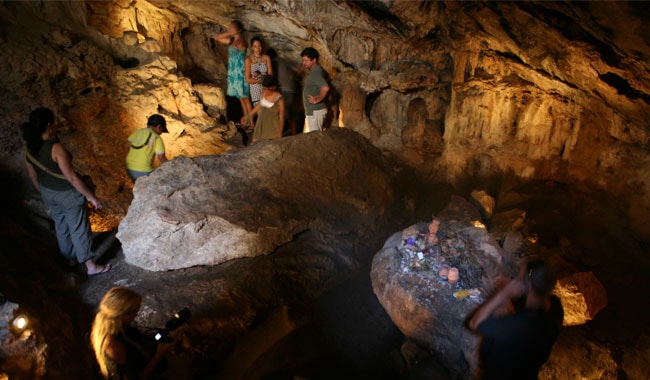
Source: Balears cultural tour.
About 500 metres from Dalt Vila is a well-preserved Phoenician archaeological site: the Necropolis del Puig des Molins. At the end of the 12th century, the Phoenicians settled in an area in Ibiza called Puig de Vila. Due to the development of the city, its cemetery grew in size as well. This remarkable UNESCO World Heritage site occupies a vast area that contains over 3,000 Punic tombs. It is considered to have the world’s finest collection of Punic remains.
The earliest tombs date as far back as the 7th century BC. What stands out among these tombs is the “hypogea”, a large subterranean chamber dug deep into the hill. Visitors can descend into the entrance of these burial caverns.
The adjacent Monographic Puig des Molins Museum has five salons with different artefacts that depict the entire period of use of the necropolis, covering Phoenician, Punic and Roman influences. This is located in Ibiza Town and open to the public from Tuesday to Sunday.
La Almudaina and Ibiza Castle
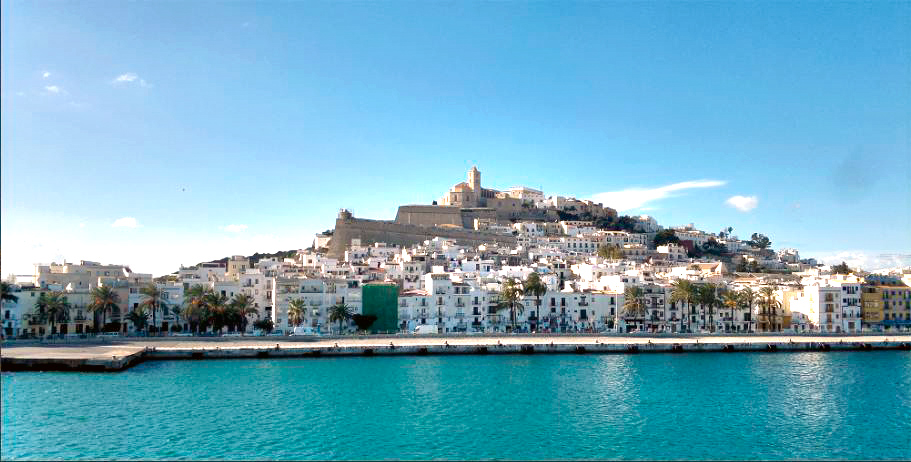
Source: descubriendo ibiza.
La Almudaina and Ibiza Castle are a series of buildings found within the walls of the Old Town. Ibiza Castle is also known as Eivissa Castle in the local dialect.
La Almudaina and the castle stand on top of a hill, most likely looking very much as they did when they were erected in the 12th century. Eivissa Castle actually pre-dates the city walls. The compound includes the Governor’s House, La Almudaina or citadel, and the 12 towers.
Alfonso III of Aragon famously stayed in the Governor’s House during the late 1200s. La Almudaina was originally built to be the administrative and military headquarters of the Moslem ‘Wali’ The elongated installation contains nine square towers. The ruins of the structure were dated back to the 12th to 13th centuries. However, the current fortress was constructed during the 16th century, under orders from Philip II. The doorway is crowned by the shields of the Crown of Aragon and the Governor Alonso de Zanoguera. The infantry battalion barracks around the parade grounds were constructed during the 18th century.
Ibiza is more than just a beach and party town. Get a dose of Ibiza history by taking time out to visit its fascinating landmarks and monuments. The past is still reflected in the local Ibiza culture, and it is one aspect of the island that visitors are encouraged to discover.

